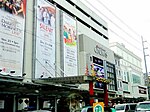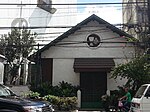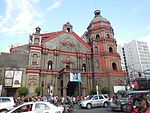168 Shopping Mall
168 Shopping Mall (Chinese: 一路發商場; Pe̍h-ōe-jī: It-lō͘-hoa̍t siong-tiûⁿ) is a shopping complex in Binondo, Manila, the Chinatown of the Philippines. The three-story complex is located along St. Elena and Soler Streets just south of Recto Avenue and Divisoria. It is owned and managed by the 168 Group of Companies. Close competitors to the mall are the 11/88 Mall, the 999 Mall, and the Lucky Chinatown Mall. The building houses over 500 tenants and is considered to be one of the most visited malls in the area, before the opening of the Lucky Chinatown Mall in 2012. It is still one of the common destinations when shopping for bargain goods and other commodities, from novelty items, bags, shoes, toys, hardware, RTW's, and others.
Excerpt from the Wikipedia article 168 Shopping Mall (License: CC BY-SA 3.0, Authors).168 Shopping Mall
Ilaya Street, Manila San Nicolas (Third District)
Geographical coordinates (GPS) Address Nearby Places Show on map
Geographical coordinates (GPS)
| Latitude | Longitude |
|---|---|
| N 14.604722222222 ° | E 120.97222222222 ° |
Address
168 Shopping Mall
Ilaya Street
1010 Manila, San Nicolas (Third District)
Philippines
Open on Google Maps






